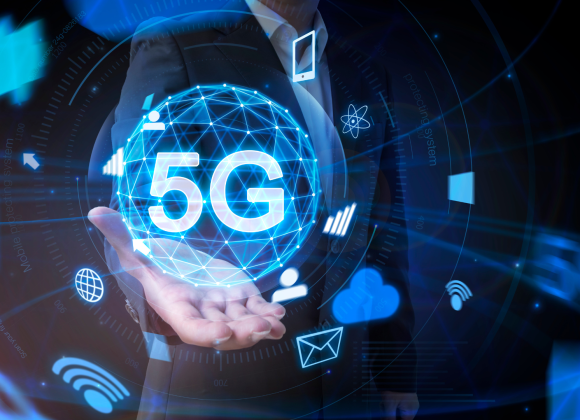In today’s fast-evolving world of medical innovation, nanotechnology is transforming healthcare in groundbreaking ways. Once limited to the realm of science fiction, scientists and researchers now use nanotech to tackle real-world health challenges—from detecting diseases early to delivering personalized treatments and advancing regenerative medicine.
But what nanotechnology exactly is, and how is it changing the way we experience healthcare?
Let’s dive into how this tiny technology delivers a massive impact on how we diagnose, treat, and even prevent diseases.
What Is Nanotechnology in Healthcare?

Nanotechnology involves engineering materials and devices on the nanoscale—typically less than 100 nanometers in size. To put it into perspective, a single human hair is about 80,000 to 100,000 nanometers wide.
In medicine, this means designing ultra-small tools—called nanoparticles, nanobots, or nanoshells—that can interact with biological systems at the cellular or even molecular level. These can be designed to detect diseases earlier, deliver drugs more accurately, or even repair damaged tissues from within.
🔗 Learn more from the National Nanotechnology Initiative
How Nanotechnology Is Changing Healthcare
1. Early and Precise Disease Diagnosis
One of the most promising applications of nanotechnology is early detection of diseases like cancer, Alzheimer’s, or cardiovascular conditions.
Nanodiagnostics:
- Gold nanoparticles or quantum dots can highlight disease markers in blood or tissues.
- Nanobiosensors detect cancer biomarkers at extremely low concentrations—sometimes before symptoms even appear.
Example: Nanotech-enhanced imaging can spot brain plaques associated with Alzheimer’s, improving early diagnosis.
2. Targeted Drug Delivery
Traditional drugs often circulate throughout the body, affecting healthy and diseased tissues alike—leading to side effects. Nanotech enables targeted delivery, sending medication directly to affected cells, increasing effectiveness and reducing harm.
Smart drug carriers:
- Liposomes, dendrimers, or polymeric nanoparticles encapsulate drugs.
- They release medication only in response to specific stimuli like pH, temperature, or enzymes at the disease site.
🔗 NIH on Targeted Nanomedicine
3. Cancer Treatment: More Precision, Less Pain
Nanoparticles can deliver chemotherapy drugs directly to tumors, minimizing exposure to healthy tissues and side effects like hair loss or nausea.
Hyperthermia therapy: Some nanoparticles heat up when exposed to infrared light, selectively destroying cancer cells while sparing healthy ones.
Example: The FDA-approved Doxil, a nanotechnology-based drug for ovarian cancer, delivers doxorubicin more safely and effectively than traditional formulations.
4. Regenerative Medicine and Tissue Engineering
Nanotechnology plays a major role in regrowing tissues or organs. Nanoscale scaffolds made of biomaterials support cell growth and tissue repair.
Applications include:
- Healing skin wounds and burns
- Repairing cartilage or bone
- Engineering artificial organs in labs
5. Infection Control and Antimicrobial Surfaces
In an era of rising antibiotic resistance, nanotechnology offers powerful alternatives.
Nano-antimicrobials:
- Silver nanoparticles have strong antibacterial, antiviral, and antifungal properties.
- Nanocoatings on hospital surfaces, implants, and surgical tools can prevent infections.
Hospitals worldwide are beginning to integrate nano-treated surfaces to combat hospital-acquired infections (HAIs).
6. Wearable Health Monitoring
Nano-enhanced wearable sensors can continuously monitor vital signs and even detect metabolic changes in real time.
Examples:
- Sweat-analyzing nanosensors that detect dehydration or electrolyte imbalance
- Smart bandages that monitor wound healing and release medication as needed
🔗 Stanford’s Nanotech Wearables
The Benefits of Nanotechnology in Healthcare
- Personalized medicine tailored to individual patients
- Fewer side effects due to targeted treatment
- Earlier detection of disease improves survival rates
- Minimally invasive procedures reduce recovery time
- Potential cost savings in the long term with precise treatments
Challenges and Ethical Considerations
While the future is promising, nanotech also raises questions:
- Long-term safety: How will nanoparticles behave in the body over time?
- Regulatory oversight: Current frameworks are still catching up with the rapid pace of innovation.
- Accessibility: Will nanotech-based treatments be affordable and available globally?
- Environmental impact: What happens when nanomaterials accumulate in nature?
The FDA and EMA are working to create clearer guidelines for nanomedicines to ensure patient safety and ethical research.
Conclusion: Is Nanotechnology the Future of Medicine?
The future of nanotech in healthcare looks incredibly promising, with innovations like nanorobots that could patrol the bloodstream to detect diseases or perform tiny surgeries, nanovaccines designed for better immune responses, and artificial blood using nanoparticles to mimic red blood cells in trauma care. As artificial intelligence and nanotechnology continue to merge, we can expect major leaps in smart diagnostics, real-time disease tracking, and even the development of self-healing tissues using nanosensors and advanced materials. While we’re still in the early stages of widespread adoption, nanotechnology is already transforming healthcare—making diagnosis faster, treatments more targeted, and tissue regeneration more effective. As research progresses and technology becomes more accessible, nanotech is well on its way to becoming a central pillar in the future of modern medicine.




